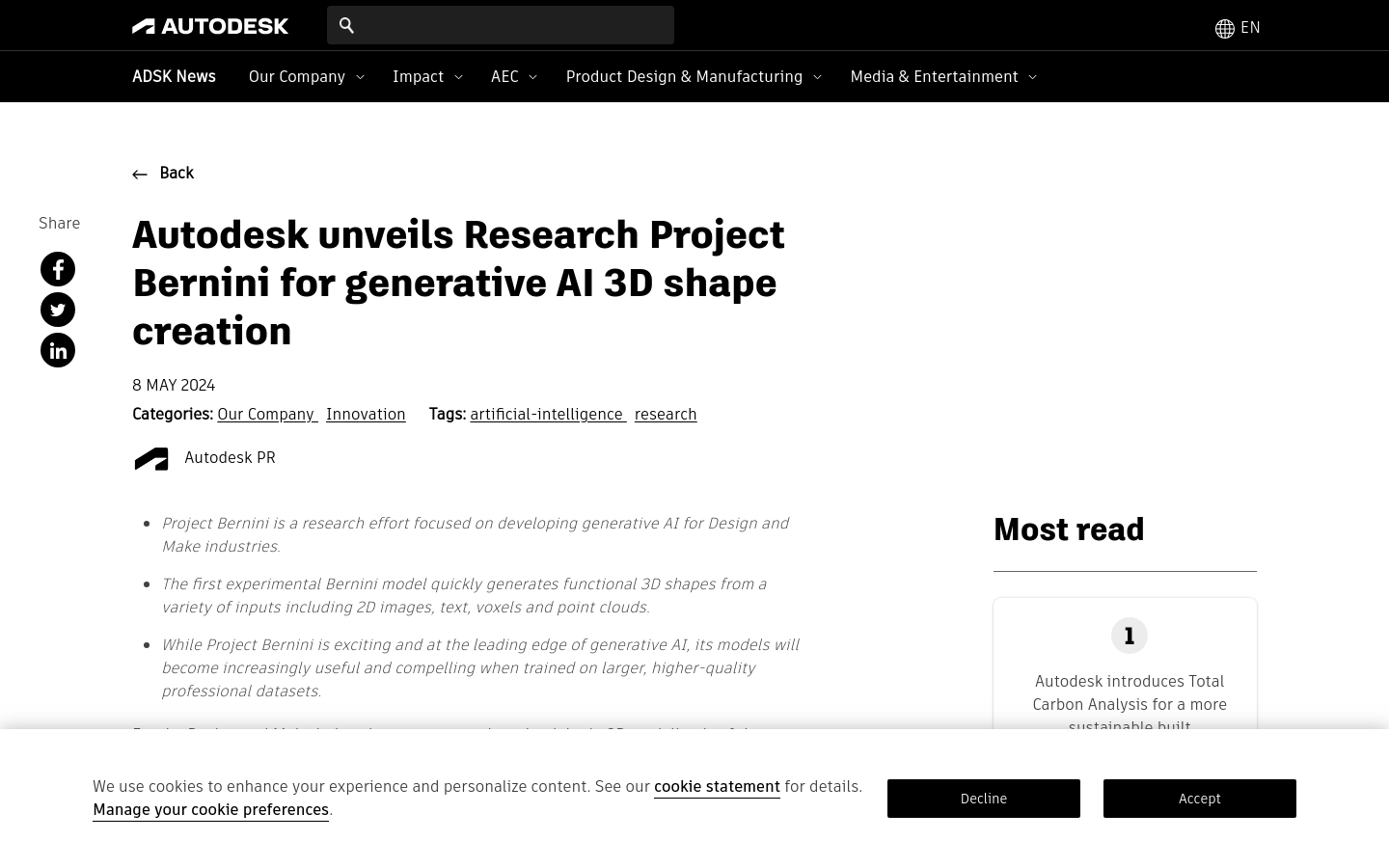

Bernini
Overview :
Project Bernini is an Autodesk research project aimed at developing generative artificial intelligence for the design and manufacturing industries. The model can rapidly generate functional 3D shapes from various inputs, including 2D images, text, voxels, and point clouds. Bernini is designed for professional geometric workflows, generating multiple functional variants for given inputs. Autodesk is dedicated to creating generative models that can be used in multiple cases such as architecture, product design, entertainment, focusing on generating functional 3D structures because the outputs of these models must work in the real world to meet the designer's intentions.
Target Users :
["Architect: Generate precise geometric architectural models","Engineer: Facilitate accurate engineering design and manufacturing","Manufacturer: Quickly generate product models to enhance production efficiency","Film Creator: Offers diverse 3D shape options for special effects and scene design"]
Use Cases
Generate practical壶models using Project Bernini
Provide innovative geometric design inspiration for architectural design
Generate new virtual characters or environmental models in the entertainment industry
Assist in automotive design, creating new vehicle series models
Features
Generate 3D shapes quickly from a single 2D image
Support multiple input sources, including multi-view images, point clouds, voxels, and text
Design for professional geometric workflows, providing precise geometric control
Generate multiple functional variants to increase designer options
Generated shapes and textures are separate, avoiding variable confusion
Model training is based on diverse datasets with millions of 3D shape examples
Currently in an experimental stage and open to use by invitation only
How to Use
Step 1: Select the input source, which could be 2D images, text, point clouds, or voxels
Step 2: Import the input data into the Project Bernini model
Step 3: Adjust the model parameters as needed to obtain the required 3D shape
Step 4: The model will generate multiple functional variants for selection
Step 5: Choose the most suitable variant for further design or manufacturing
Step 6: Refine and optimize the selected 3D shape to meet specific design requirements
Step 7: Apply the final 3D model to practical projects, such as architecture, product design, or entertainment production
Featured AI Tools
Chinese Picks

Douyin Jicuo
Jicuo Workspace is an all-in-one intelligent creative production and management platform. It integrates various creative tools like video, text, and live streaming creation. Through the power of AI, it can significantly increase creative efficiency. Key features and advantages include:
1. **Video Creation:** Built-in AI video creation tools support intelligent scripting, digital human characters, and one-click video generation, allowing for the rapid creation of high-quality video content.
2. **Text Creation:** Provides intelligent text and product image generation tools, enabling the quick production of WeChat articles, product details, and other text-based content.
3. **Live Streaming Creation:** Supports AI-powered live streaming backgrounds and scripts, making it easy to create live streaming content for platforms like Douyin and Kuaishou. Jicuo is positioned as a creative assistant for newcomers and creative professionals, providing comprehensive creative production services at a reasonable price.
AI design tools
105.1M

Promeai
PromeAI is powered by a robust AI-driven design assistant and a vast library of controllable AIGC (C-AIGC) model styles. It enables you to effortlessly create stunning graphics, videos, and animations, making it an indispensable tool for architects, interior designers, product designers, and game & animation designers.
AI design tools
6.5M

















